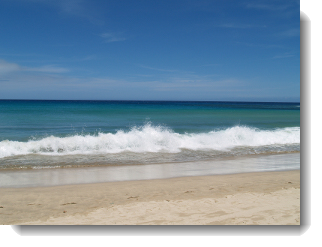There is a problem with an early morning practice, especially if you do it right after you get out of bed. The problem is that all of your muscles are still stiff from a night of inactivity. Stiff muscles mean that you will be less flexible and you will not be able to move as deeply into your yoga poses as you usually do. It is also possible for you to injure yourself if your muscles are stiff and cold.
The Ujjayi breath is one way to combat this stiffness.
What is Ujjayi breath
Ujjayi breath is a particular kind of yoga breathing. It is used to help focus the mind, heat the body and pace your practice.
Ujjayi breath is a noisy breath. You make a sound when you breathe. When done properly the sound is a soft sound like a gentle wind blowing through the trees or the waves at the beach washing up on the shore.
Why do Ujjayi breath
Doing the Ujjayi breath as a part of your yoga practice will heat up your body and make your muscles softer and more flexible. When you do Ujjayi breath you are bring lots of oxygen into the body. Oxygen is the fuel that your body needs to burn to create energy for your muscles. When you burn all of the oxygen to create the energy you also create lots of heat. The heat is used to warm the muscles up and make them softer.
When the muscles are soft from this heat then they are able to stretch safely and you will be able to go further into your yoga poses than when your muscles are cold and stiff. The Ujjayi breath is an important element to a safe and satisfying early morning practice.
How do you do Ujjayi breath
Ujjayi breath is done by shutting your mouth. Bring your lips together and keep your teeth slightly apart. It is important not to clench your teeth or tense your face muscles.
You breathe in and out through your nose. There is a slight restriction in the back of your throat. This restriction is where the Ujjayi breath sound is produced. You can feel and hear the breath as you breathe in and out.
You breathe at a moderate pace. You are not panting, nor are you breathing at your normal resting rate. This moderate pace and the fact that your mouth is shut is where the heat comes from.
Each breath is bringing lots of oxygen into the body to be used as fuel to heat the body and make the muscles warm and flexible.
When to do Ujjayi breath
You start doing Ujjayi breath at the very beginning of your yoga practice and you continue doing Ujjayi breath all the way through your practice to the very end.
But you forget to do Ujjayi breath once you start your practice
It is quite common to forget to do Ujjayi breath during your yoga practice.
- Often you will start your practice.
- Start the Ujjayi breath.
- Then you enter your first pose.
- The next thing you realize is that you are no longer doing Ujjayi breath.
When you realize that you have stopped your Ujjayi breath, start doing it again from that point forward.
It takes a considerable amount of time and practice to make the Ujjayi breath a habit. Keep practicing and the length of time that you are doing Ujjayi breath will become longer and longer until finally you will be doing the Ujjayi breath all of the way through your practice.
Learning to do Ujjayi breath for extended period of time is like learning a yoga pose. It takes lots of practice, repetition and patience.
Summary
The problem with an early morning practice is that your muscles are stiff and cold. The Ujjayi breath can be used to heat the muscles up. Once your muscles have warmed up they will be able to be stretched safely.
Next Step
Work with your teacher to develop your Ujjayi breath. Your teacher will help you to get the sound right.
And when you forget to do the Ujjayi breath, your teacher will remind you to resume the Ujjayi breath.




